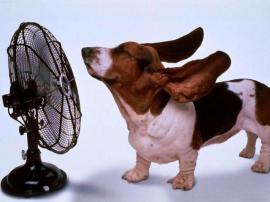As I Blog For The Change for Animals, I want others to know what I learned at the age of nine. Dogs left on chains go crazy. Fearful, lonely and desperate, dogs on chains bite, break away, turn feral or end their lives under the wheels of autos.
This April 15, 2012, I publish again my top 2011 post, which received 540 hits on the day it went live on the Web July 25, 2011.
Photo credit: Ultimate-Wallpaper.com
Please visit the links below for Dogs Deserve Better (than life on a chain). My blog’s gone ORANGE for April Prevent Cruelty to Animals month.
“Unchain Me,” Dogs Deserve Better
Dogs on chains often become chronic barkers. Their barking serves to say, “I’m here. I’m alone. Please help me.”
When I was a child one of our neighbors kept a black Labrador retriever on a chain across from my bedroom. The dog became a chronic barker. I don’t recall him barking at night from inside of his house. But during the day, he never failed to bark a few times per minute all day every day. I knew something wasn’t right. I felt sad for that poor dog.

If at that time I had known that animals have rights to good welfare and freedom from poor treatment, I would have talked my parents into making a complaint. As it was, our family and other neighbors suffered the constant barking. Now I know that the dog’s suffering was far worse than ours.
What does being left on a chain do to dogs?
First of all, dogs develop huge frustration from not being able to do their natural behaviors. New research on animals points to their need to walk, run, and seek out new places, animals, and smells.
Living staked out on a chain inhibits positive emotions in dogs.
Being social animals dogs crave company. They crave the companionship and interaction of people and other dogs. A dog in a chain stresses and struggles to join his family, to play and to run. Dogs often will choose to nap near a favorite person in their household or to follow someone at work from office to office.
Chain restraints set up reinforcement of negative emotions.
A dog on a chain doesn’t feel safe because dogs live in social groups. Being staked out on a chain makes a dog vulnerable making a chained dog crazy and dangerous. A chained dog can’t flee, hid or run to safety when he feels scared or threatened. This is why many dogs on chains become aggressive to all who approach. When dogs cannot explore, exercise or use their healthy curiosity, dogs often become chronically fearful.
Fear can become full blow rage.
As Temple Grandin points out in, Animals Make Us Human, we can give dogs good lives by providing for their positive emotions called SEEKING. Dr. Jaak Panksepp, a neuroscientist, calls the core emotion systems “blue-ribbon emotions.” People and animals live happier lives, when our curiosity, physical comfort, and safety needs are met.
“…when you stimulate the brain systems for one of the core emotions, you always get the same behaviors from the animal.” Temple Grandin
The negative emotion of FEAR in people or animals rapidly can become RAGE.
We need to provide for dog welfare by not chaining dogs, not subjecting them to living conditions that cause them to feel fear and rage.
What may look like a dog aggression problem might in fact be a people problem. This is a problem of people not understanding a dog’s need for positive emotional experiences and freedom from negative emotions.
Many agencies work for animal welfare. Specific agencies work to educate and to advocate to free dogs from chains. If you want to help this cause, follow this link to Dogs Deserve Better Than Life on a Chain or in a Pen.
Please visit wonderful pet bloggers on this blog hop at Be the Change for Animals.

